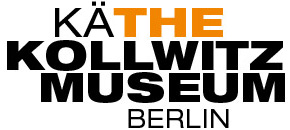History
Berlin’s history as a divided city and the ideology of the Cold War are both possible reasons for why Berliners had to wait so long for a museum dedicated to Käthe Kollwitz. In East Berlin, the Akademie der Künste (Academy of Arts), the Kupferstichkabinett (Museum of Prints and Drawings), and the Otto Nagel House regularly exhibited Käthe Kollwitz’s art.
With the express support of the Kollwitz family, West Berliners campaigned for the establishment of a Käthe Kollwitz Museum – in vain. Their wish was only met in the mid-1980s, when two museums dedicated to the artist were established almost simultaneously in Germany, in Berlin and in Cologne. Today, both museums (and the memorial site in Moritzburg, where she died) have permanent exhibitions on Käthe Kollwitz.
Founder
Born in 1908 in Lüdenscheid, Hans Pels-Leusden moved to Berlin in the early 1930s in order to become a visual artist. After successful beginnings with solo exhibitions, e.g. in the Gallery Nierendorf, and museum acquisitions in his Westphalian home, the young artist focused increasingly on writing art criticism during the Nazi era.
In 1940, he was drafted for military service and returned to Berlin in 1945. His studio and artistic work were destroyed by bombing. As of 1950, Pels-Leusden committed himself to antiquarian book trade which was soon expanded by an art trade. From the 1960s onward, his gallery at the Kurfürstendamm became an important cultural institution in the western part of Berlin, which was primarily dedicated to classical modernism. Pels-Leusden has presented the work of Käthe Kollwitz since the 1960s, which has resulted in his collection of works by the artist over the years.
Besides his gallery activities, Pels-Leusden constantly pursued his own artistic ambitions. From the 1970s onward, he regularly presented his works at exhibitions. At the time of his death in 1993, he left behind a vast artistic oeuvre which includes works on canvas and paper at the same time. Preceding exhibitions, which also took place in the gallery Pels-Leusden, presented current works of the artist in a mostly broad overview.

Museum
The Kollwitz Museum, together with the Literaturhaus Berlin and the auction house Grisebach, is part of a unique and lively cultural district. This building ensemble at Fasanenstrasse 23-25, which was badly damaged during the World War II, had long been neglected and was supposed to give way to the widening of the street. A citizens’ initiative was able to prevent the demolition of the so-called Winter Garden Ensemble, so that a new art mile was created in the small but fine Fasanenstrasse.
The approximately 600 square meter museum building is one of the oldest houses on the street and was originally built in 1871 as a villa for the Kommerzienrat Schirmer. In the meantime it has become too small for the well-attended Kollwitz Museum. Since it is not barrier-free, it unfortunately no longer meets modern requirements. In 2022, the Käthe Kollwitz Museum will move to a new location at the Theater Building at Charlottenburg Palace.
